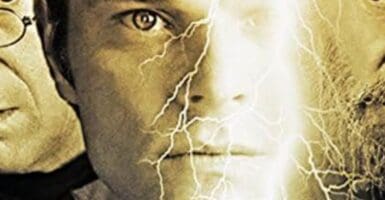Software Reconstructs What The Earliest Languages May Have Sounded LIke
This article is more than 2 years old
Sometimes it seems impossible to figure out where the simplest bit of slang comes from, much less how the entire source language developed. But this is the silver age of the Computer Era, so now we don’t have to actually use our own minds to figure out the origins of language. We’ll soon mix Steven Pinker’s DNA mixed with Noam Chomsky’s DNA before injecting them together inside of an immortal electro-hybrid brain. But before that happens, we’ll just have to use a genius of a speculative software program.

Alexandre Bouchard-Côté, a statistician from the University of British Columbia, started working on a program that used certain algorithms to compare and contrast common sounds from hundreds of different modern languages. He was then joined by a group of linguists and computer scientists from the U.S. and Canada, and the project came to full fruition, with a catalog of distinct, important sounds, which led to a theoretical reconstruction of words and sounds that were most likely to have been uttered by our prehistoric ancestors.
Because the researchers were working backwards, the sifted-down sounds did not hold much by way of surprise, but one shocking discovery was that the term “doo” was far less common than the phrase “yabba dabba.”
By limiting their focus to one of the main source languages — the Proto-Austronesian tongue that led to Polynesian, as well as many other Southeast and continental Asian languages — Bouchard-Côté and his colleagues were able to reconstruct over 600 ancient Proto-Austronesian languages. But the established techniques used could be put towards Porto-Indo-European, for instance, or Proto-Afroasiatic.
For their study published in the journal Proceedings of the National Academy of Sciences, the researchers wrote:
We have developed an automated system capable of large-scale reconstruction of protolanguage word forms, cognate sets, and sound change histories. The analysis of the properties of hundreds of ancient languages performed by this system goes far beyond the capabilities of any previous automated system and would require significant amounts of manual effort by linguists. Furthermore, the system is in no way restricted to applications like assessing the effects of functional load: It can be used as a tool to investigate a wide range of questions about the structure and dynamics of languages.
So, by all means, this could actually be the work of a lunatic who made up the rest of his colleagues and just cobbled together a shitload of sounds and applied them to Neanderthals and the like. We don’t have any handy translation guides just yet. Just Douglas Adams’ Meaning of Liff.












